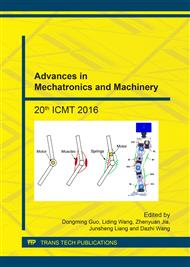p.158
p.166
p.172
p.178
p.183
p.192
p.201
p.207
p.212
Numerical Optimization of Shrinkage and Warpage on the Injection Molding Process Parameters of Electrical Connector
Abstract:
Integrated with orthogonal design method and numerical simulation, injection molding process of the Y-type electrical connectors was conducted to study the influence of process parameters on volume shrinkage rate and maximum warpage, which are regarded as product quality indices. The multi-indices valuation model for the main influencing factors of the process is developed. The influencing sensitivity to the multi-objective of the processing parameters, such as melt temperature, mold temperature, injection time and holding pressure, is determined by range analysis. Through analyzing the diagrams of influential factors, the optimized process parameter diagram is obtained and verified by simulation. The optimum parameters minimizing the warpage defect and shrinkage are: melt temperature (528K), mold temperature (338K), filling time (0.6s), holding pressure (100%) and holding time (10s). The results show that it is effective to balance the impact of process parameters on the shrinkage and warpage. The work can provide optimal design and process reference for the quality control and assembly precision.
Info:
Periodical:
Pages:
183-191
Citation:
Online since:
July 2017
Authors:
Price:
Сopyright:
© 2017 Trans Tech Publications Ltd. All Rights Reserved
Share:
Citation:


